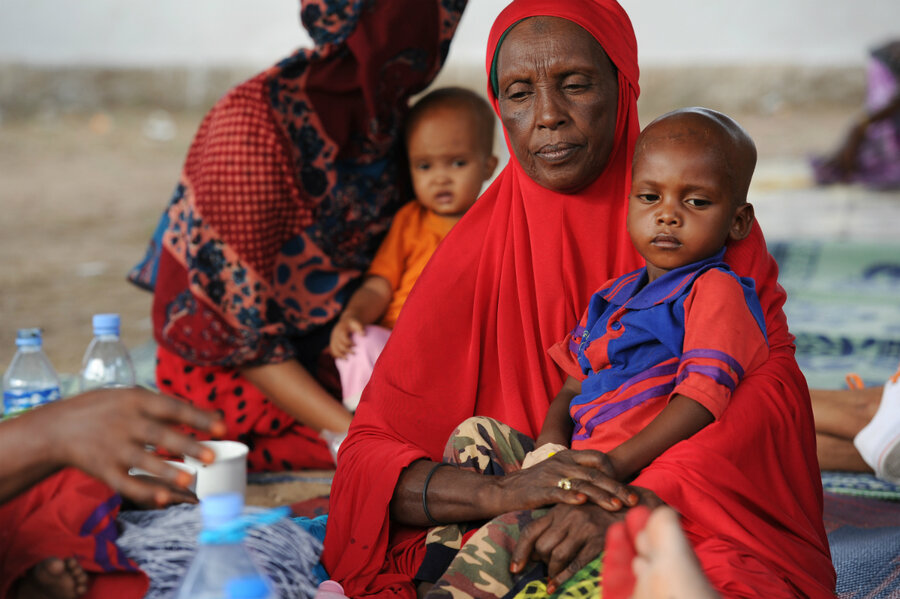Hunger levels rise as global conflict continues
Loading...
| Rome
Global hunger levels have risen for the first time in more than a decade, now affecting 11 percent of the world's population, as conflict, climate change, and economic woes bite, UN agencies said on Friday.
Last year, 815 million people were hungry – 38 million more than in 2015 – the five agencies said in the first global assessment since governments set an international target to eliminate hunger and malnutrition by 2030, as one of a set of so-called Sustainable Development Goals (SDGs).
The number of hungry began to rise in 2014, but this is the first time in more then a decade that the proportion of the global population going hungry has risen.
About 489 million of the hungry are living in countries affected by conflict.
"Over the past decade, conflicts have risen dramatically in number and become more complex and intractable in nature," the heads of five UN agencies said in The State of Food Security and Nutrition in the World 2017 report.
"This has set off alarm bells we cannot afford to ignore: we will not end hunger and all forms of malnutrition by 2030 unless we address all the factors that undermine food security and nutrition," they said.
Famine struck parts of South Sudan earlier this year, and there is a high risk that it could return there – and develop in other countries affected by conflict: northeast Nigeria, Somalia, and Yemen, the agencies said.
The report was produced by the UN Food and Agriculture Organization (FAO), International Fund for Agricultural Development (IFAD), UN Children's Fund (UNICEF), World Food Program (WFP), and World Health Organization (WHO).
The agencies called for new ways of working to achieve the goal of ending hunger and malnutrition by 2030.
"It's not only about meeting need, but also ending the need and addressing the root causes of hunger," Zlatan Milisic, WFP's deputy director of programs told the Thomson Reuters Foundation.
In war-torn countries, it means agencies need to spend more time understanding the complexities of the conflict and working towards building peace, he said.
"We have a lot of research ... which says food insecurity doesn't directly lead to conflict, but it is a very powerful trigger ... (and) food security has been as seen as a contributor to maintaining peace," Mr. Milisic said.
Aid can sometimes increase tensions in a community. For example, unless aid for refugees supports their hosts as well, it may raise tensions with those families – who are often poor themselves with little access to basic services.
Aid programs that create jobs, restore roads, and improve farming in countries recovering from war help address root causes of conflict, FAO says.
Intense and prolonged droughts can significantly increase the likelihood of conflict, according to the report. And these are expected to become more frequent with climate change.
The proportion of children stunted by hunger fell to 22.9 percent in 2016, from 29.5 percent in 2005. Now, about 155 million children under five years old are affected. Stunting can undermine children's physical and mental development.
"We see there is a decline – we also know that decline is not as fast as we would like ... to meet the SDG targets," said Victor Aguayo, UNICEF's director for nutrition said.
The number of stunted children – short for their age – fell by 40 percent between 1990 and 2015 and Mr. Aguayo said this decline should continue.
Progress hinges around improving diets for women and children, improving the status of women in society, and lowering poverty levels, he added.
A worrying trend is the rise of child obesity, with an estimated 41 million children around the world now overweight.
"Obesity is going to increasingly affect the poor, caused by poor diet and poor lifestyle," Aguayo said.
Asia has the largest number of hungry people – 520 million – and sub-Saharan Africa has the highest proportion of hungry, affecting 20 percent of the population.
Wars, droughts linked to last year's El Niño weather phenomenon, and a global economic slowdown have affected people's access to food, the agencies said.
Falling commodity prices – especially for oil – have made it harder for some countries to import food and to fund state subsidies which normally protect people from hunger, said Jose Rosero Moncayo of FAO's statistics division.
Overall, however, it's not clear whether the rise in the number of hungry people is a sign of longer-term trend, he said.
This story was reported by Reuters.







